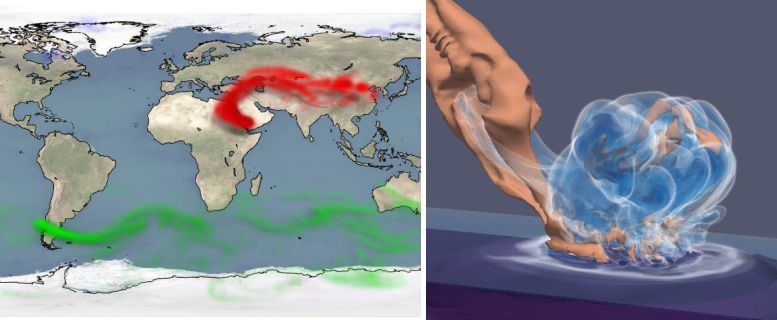Reiter

Description
In this course, students gather practical programming experierence in different areas of visual computing. Group projects are offered in scientific visualization and in physically-based simulation. Apart from those two main roads, individual group projects are also possible, but this option is limited by the available supervision capacy in the given semester.
This course is offered in the winter semester and is streamlined such that multiple groups of students can take the course at the same time. The intermediate presentations are attended by all students in order to promote exchange of ideas and experience among groups. The teams are formed at the beginning of the semester, thus a prior team formation is not needed for the visualization and physics simulation projects. The individual projects, however, can be started at any time. For individual projects, a prior team formation and a task proposal are required.
Topics
Visualization Project
Requires: Scientific Visualization
Students must have attended the course Scientific Visualization.
In teams of 3-4 students, a scientific data set of choice is processed and interactively visualized. Students are free to choose from a given set of data sets, including satellite measurements of volcanic eruptions, salt ensemble simulation, cosmology simulation, asteroid impact simulation, vortex street, weather simulation, ocean eddy simulation, Earth mantle convection, and wildfire simulation. If a current topic is chosen, it is possible to participate in the IEEE Scientific Visualization Contest.
Physics Simulation Project
Requires: Physically-based Simulation in CG
Students must have attended the course Physically-based Simulation in Computer Graphics.
In teams of 3-4 students, a rigid body, soft body, or fluid simulation demo is implemented, which is either interactive or rendered as video. The content of the demo is chosen by the students. Demos from previous courses included rigid-fluid coupling, rigid-soft body coupling, collision detection algorithms, and fluid animation techniques. The interactive physically-based simulation could also be embedded in a video game.
Individual Project
Requires: Computer Graphics
Students must have attended the course Computer Graphics.
If you would like to do a project outside of scientific visualization and physically-based simulation (for example in computer graphics), or if you would like to do the project not parallel to the winter semester course, then you can form a team of 3-4 students and conduct an individual project. To propose an individual project contact tobias.guenther@fau.de and send a detailed description of your project plan, a list of relevant prior courses that you took, and the composition of your team.
Grading
The projects are graded based on a written report (approx. 7 pages, 75% of grade) and an oral presentation (15 minutes, 25% of grade). A LaTeX template for the report and Power Point templates for the presentations are provided.
Goals and Competences
Students are able to:
- implement interactive visualization or physics simulation algorithms
- analyze features in scientific data set or the stability of physical simulations
- present their progress and results orally
- write a report that analyzes data and algorithms
Registration
The course is open for registration in the weeks prior to the start of the winter semester. At any other time, you can send your IdM to ✉ tobias.guenther@fau.de and ask for admittance into the StudOn course.
Kurse
Visual Computing Project - WiSe 24/25
Anmeldungszeitraum: Keine Anmeldung möglich
Maximale Teilnehmeranzahl:16 Freie Plätze: 6
Veranstaltungszeitraum: 14. Okt 2024 - 7. Feb 2025
Um dieses Objekt zu nutzen, müssen Sie angemeldet sein und entsprechende Zugriffsrechte besitzen.
Maximale Teilnehmeranzahl:16 Freie Plätze: 6
Veranstaltungszeitraum: 14. Okt 2024 - 7. Feb 2025
Um dieses Objekt zu nutzen, müssen Sie angemeldet sein und entsprechende Zugriffsrechte besitzen.
